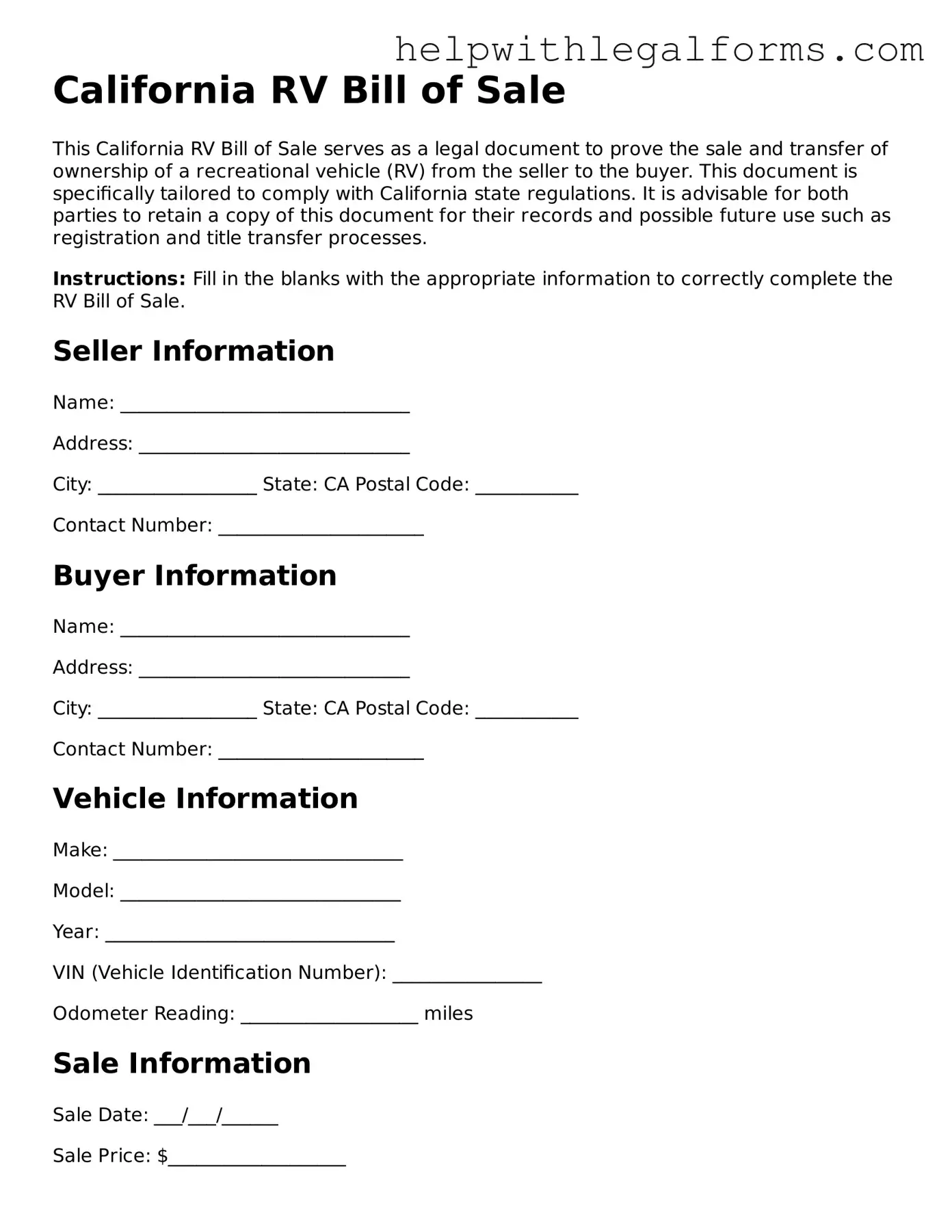California RV Bill of Sale
This California RV Bill of Sale serves as a legal document to prove the sale and transfer of ownership of a recreational vehicle (RV) from the seller to the buyer. This document is specifically tailored to comply with California state regulations. It is advisable for both parties to retain a copy of this document for their records and possible future use such as registration and title transfer processes.
Instructions: Fill in the blanks with the appropriate information to correctly complete the RV Bill of Sale.
Seller Information
Name: _______________________________
Address: _____________________________
City: _________________ State: CA Postal Code: ___________
Contact Number: ______________________
Buyer Information
Name: _______________________________
Address: _____________________________
City: _________________ State: CA Postal Code: ___________
Contact Number: ______________________
Vehicle Information
Make: _______________________________
Model: ______________________________
Year: _______________________________
VIN (Vehicle Identification Number): ________________
Odometer Reading: ___________________ miles
Sale Information
Sale Date: ___/___/______
Sale Price: $___________________
Payment Method:
- Cash
- Check
- Other: ___________________
Additional Terms and Conditions (if any)
_____________________________________________________________________________
_____________________________________________________________________________
Acknowledgement
This document does not certify the condition of the recreational vehicle. It solely represents the transfer of ownership from the seller to the buyer. The seller declares that all information provided is accurate to the best of their knowledge and that the recreational vehicle is sold in "as is" condition, with no warranties expressed or implied.
Signatures
Seller's Signature: _______________________________ Date: ___/___/______
Buyer's Signature: ________________________________ Date: ___/___/______
Note: In California, a Bill of Sale for an RV must be notarized, especially when it is required for registration or title transfer purposes.
